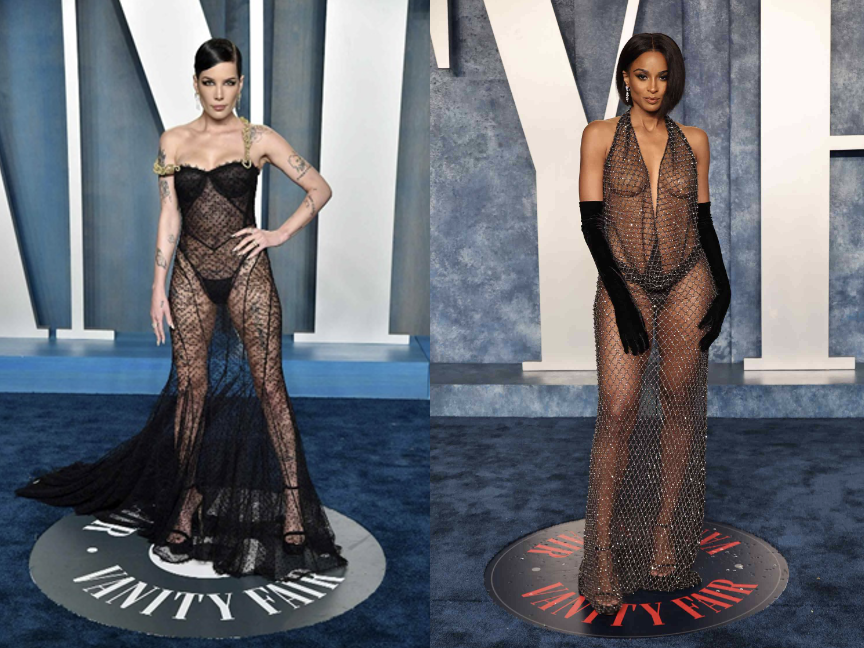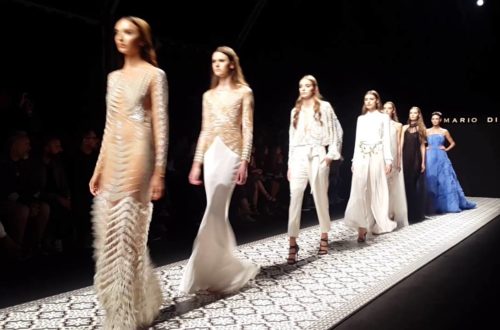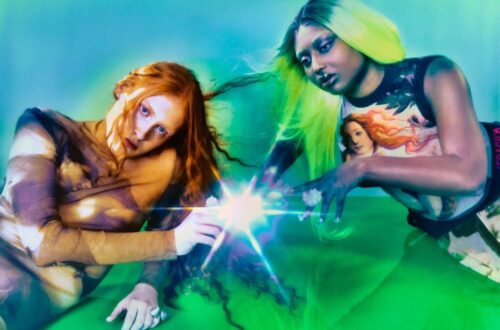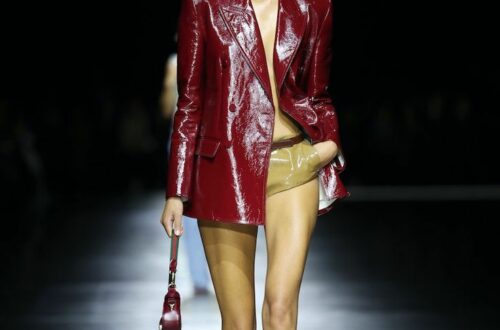From Lady Gaga’s Versace gown, to Ciara’s daring “naked dress”, sheer fabrics seem to have taken control over the most recent red (champagne?) carpets and mundane events, as well as fashion week runways and shop windows, making see-through garments one of this year’s most popular trends. What does this tell us about our sensitivity as a society and what are the historical connotations of sheer fabrics?
Historically, we can distinguish between different purposes of see-through fabrics in fashion, but we can generally find the origin of the spread of this trend between the 18th and the 19th century. In the Neoclassical culture, which arose after the French revolution and gained popularity during Napoleon’s empire, see-through garments represented a homage to “à la grecque” nudity: women used to wear clothes inspired by Ancient Greece, and in particular by its statuary repertoire, and replicated the characteristic lightweight clothing with translucent muslin gowns. In the Regency period, sheer fabrics fulfilled a totally different purpose, as they were used by some women as “additions” to their bodices to ensure modesty during the rising popularity of more exposed cleavages (this trend has recently been referenced by “Bridgerton”’s Eloise).
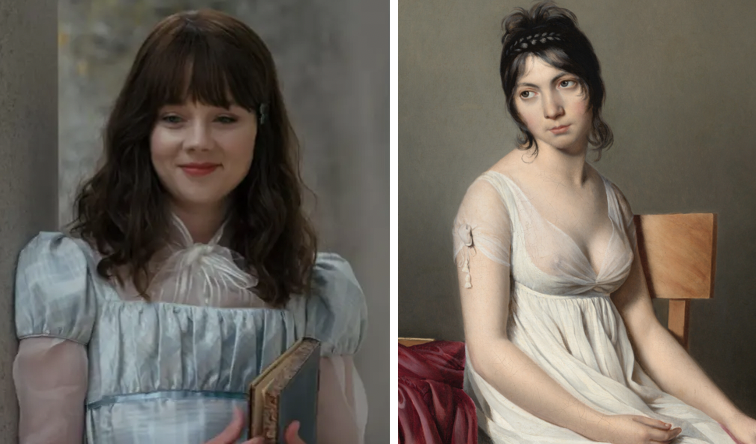
Nudity “à la grecque”, “Portrait of a young woman in white” (Jacques-Louis David,
1798)
In the previous instances, the use of transparencies communicated, respectively, elegance and modesty. However, the connotation that sheer fabrics assume in today’s society more closely resembles the one from the 60s: rebellion and confidence. In the 60s, innovative materials deriving from plastic allowed for a broader application of transparencies, which, in an era of tumultuous social transformation, assumed a futuristic and irreverent connotation. The use of see-through fabrics can be associated with the emblematic mini-skirts of the same period, representing women’s ownership of their bodies, independence, and rebellion against oppressive societal standards.
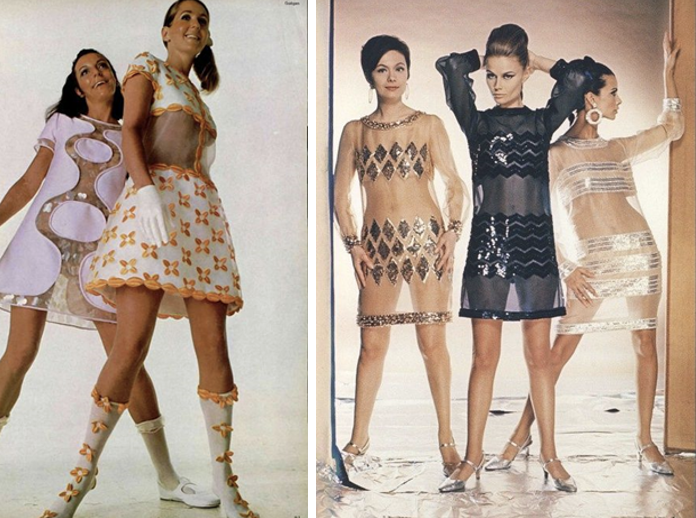
In 2023, the way we use transparencies tells us a lot about our battles and what we rebel against. Let’s consider the sheer Gucci blouse worn by Harry Styles at the 2019 Met Gala: its traditionally feminine silhouette, as well as lace details and front bow spark a conversation about the relevance of the “masculine-feminine” dichotomy that pervades fashion and our society as a whole. As a more recent example, consider the dress worn by Rihanna at the Academy Awards: a fitted garnment made of mesh fabric and leather which emphasized the singer’s baby bump in an unprecedented interpretation of prenatal fashion. In this case, Rihanna rebels by showcasing how sexuality and motherhood can coexist, and how a woman’s identity, expressed through her style, is not erased by pregnancy.
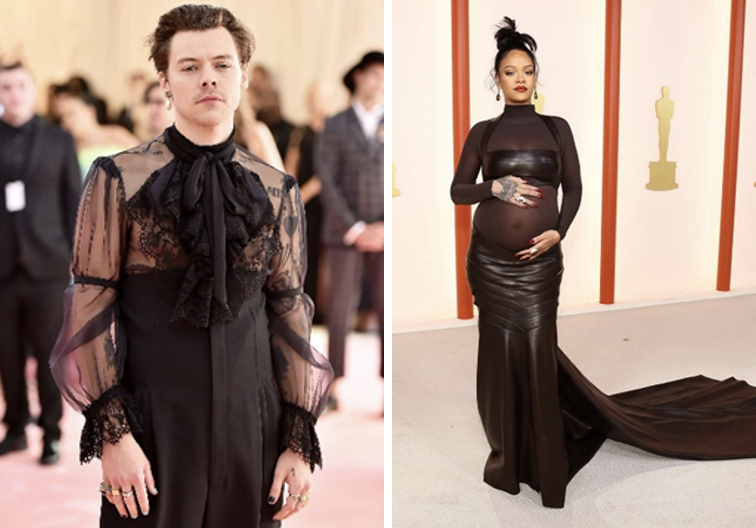
Rihanna at the Academy Awards in Alaia, 2023
Many people believe that transparencies are a way to capture other people’s attention, and so mean the subtle nudity as a service to whoever is watching. Some believe that nudity, especially feminine, is a way to be appreciated by others, seeing it as a means to satisfy the “male gaze” through one’s self-objectification. This interpretation intends sheer clothing as the concrete representation of the belief that we, as a society, are willing to trade our dignity for a brief moment of shallow notoriety granted by the approval of others. In a way, this interpretation can be traced back to the Neoclassical and Regent purposes of see-through clothing.
However, what we are witnessing is the complete opposite: in a socio-political context of great fracture between the new generations and past interpretations of sexuality and gender identity, approval is definitely not on the list of Gen Z’s top priorities. This is also witnessed by the increasing segmentation of trends and increasing emergence of subcultures in general: now, young people seek the approval of the small, niche, groups to which they belong, expressing a careless and rebellious attitude towards anyone who wants to uniformize their lifestyle and their self-expression.
In this context, we exclude the purpose of social conformation from the message that transparent clothing wants to convey, finding a convergence between the transparencies from the 60s and the ones we see trending in 2023. This message is one of freedom and possibilities: in the 60s, social movements and technological transformations allowed marginalized groups to escape the roles they thought they were destined to fulfill, likewise, in 2023 we experience the spreading desire to break free from gender norms and we seek empowerment in every form.
We are defining a new concept of “dignity”, based not on one’s belonging to social groups, but on one’s self identity as a human being. Sheer fabrics turn the attention on the body: the focus is on ourselves, rid of any adornance and any mask. In this perspective, see-through garments remind us that, in the end, we are all bodies and we are all equal, but we are also special because of our identity. In 2023, transparencies allow people to express their identity without “distractions”, and propose a philosophy where clothes are intended as a way to glorify what is already there, one’s nudity, and in turn to allow ownership of it: transparencies invite us to cherish and be proud of who we are without hiding. When we choose to wear transparencies, we allow others to see part of our true selves, we get rid of the “armor” of heavy textiles: this is why this trend, in the socio-political context of 2023, tells a tale of ownership, democratization and identity.
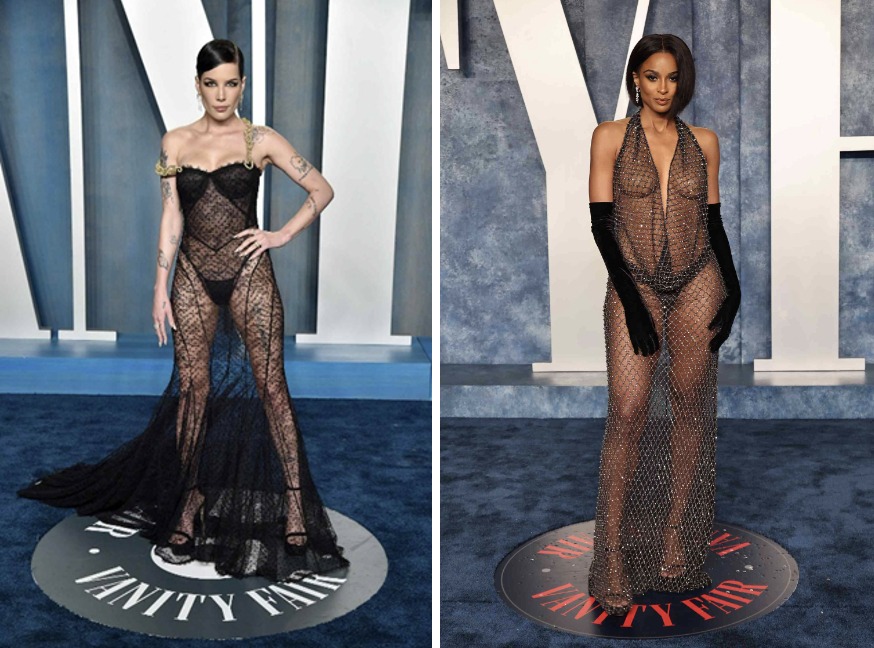
By Chiara Ricciardi
References:
“15 Trends from the 1960s That Are Still Everywhere in Fashion.” Harper’s BAZAAR, 5 Aug. 2022, https://www.harpersbazaar.com/fashion/trends/g10201919/60s-fashion-trends/.
Elizabeth, De. “Harry Styles Matched His Nails to His Outfit on the Met Gala Red Carpet.” Teen Vogue, Teen Vogue, 6 May 2019, https://www.teenvogue.com/story/harry-styles-gucci-met-gala-2019.
“Hisour – Ciao, Così Sei.” HiSoUR Ciao Cos Sei, https://www.hisour.com/it/western-fashion-of-women-in-1800-1815-32576/.
“The History of Transparency In Fashion.” TheFashionSpot, 3 May 2013, https://www.thefashionspot.com/runway-news/106222-the-history-of-transparency-in-fashion/.
Newbold, Alice. “A Sheer Dior Dress Is Rihanna’s Most Sensational Maternity Look to Date.” British Vogue, British Vogue, 1 Mar. 2022, https://www.vogue.co.uk/news/article/rihanna-sheer-maternity-dress-dior.
“V&A · An Introduction to 1960s Fashion.” Victoria and Albert Museum, https://www.vam.ac.uk/articles/an-introduction-to-1960s-fashion.
Writer, Contributing. “The Fashion of Bridgerton.” Quench, 1 Mar. 2021, https://cardiffstudentmedia.co.uk/quench/fashion-and-beauty/the-fashion-of-bridgerton/#:~:text=Throughout%20the%20show%2C%20Eloise%20often,and%20because%20of%20her%20age.

